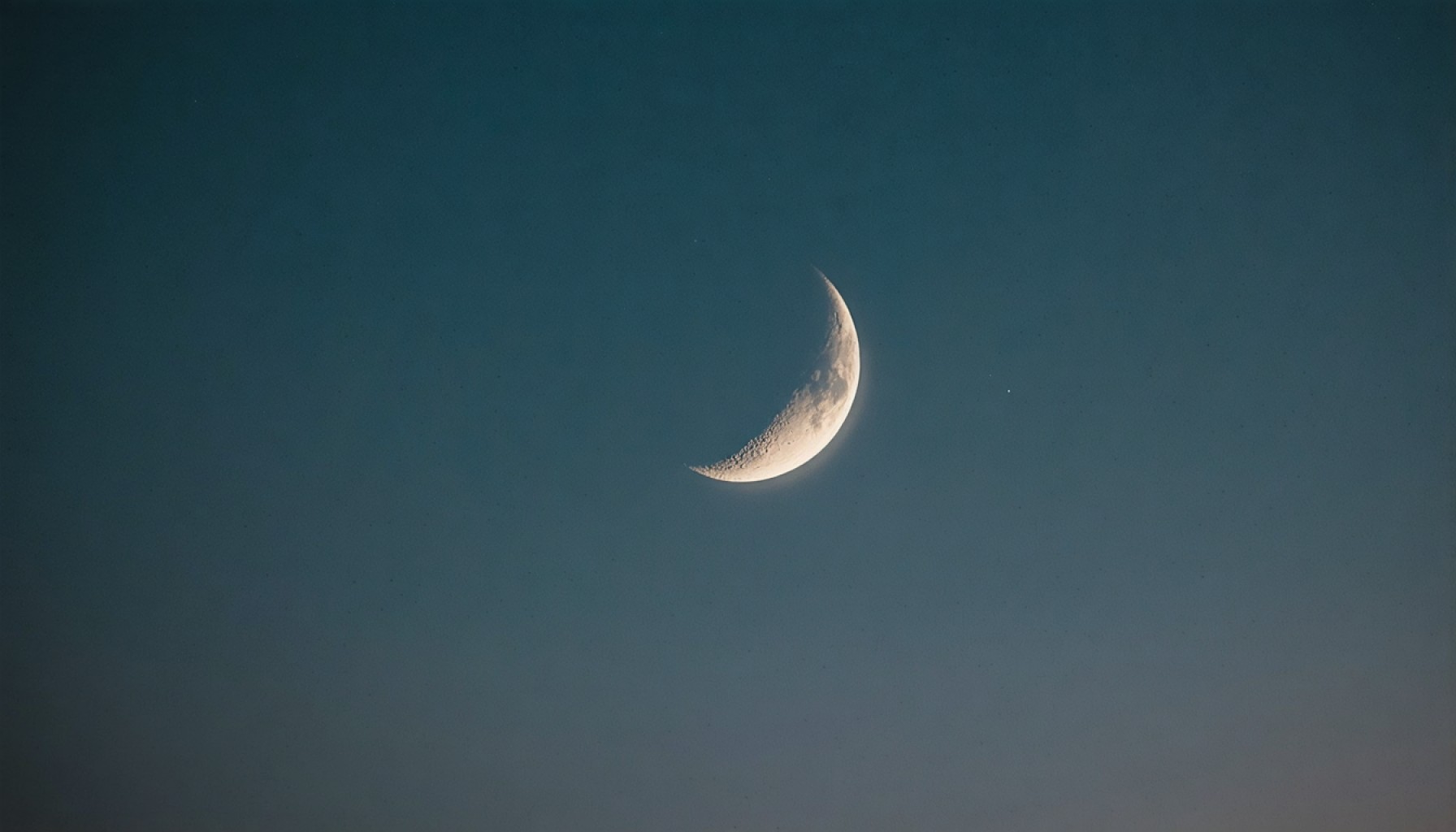- Saudi Arabia’s astronomers are fervently observing the sky for the Shawwal crescent, which signifies the end of Ramadan and the beginning of Eidul Fitr.
- Observers have only an eight-minute window post-sunset to spot the crescent moon.
- Despite clear skies, the International Astronomy Center predicts the crescent will not be visible on March 29.
- A partial solar eclipse is set to obscure up to 94% of the sun, synchronizing with the lunar events in the Arab world.
- Astronomers, including Ibrahim Al-Jarwan, suggest Eidul Fitr may be observed on Monday, March 31.
- The narrative illustrates the complex balance between human anticipation and the universe’s precise movements.
Saudi Arabia stands at the brink of celestial suspense as ten robust astronomical observatories lock gazes upon the skies, clutching their telescopes to catch a fleeting glimpse of the Shawwal crescent. This brief lunar luminary will dictate the end of Ramadan and herald the joyous onset of Eidul Fitr. With a narrow eight-minute window to make this cosmic observation, urgency pulsates through the air.
On the sacred sands of Tumair, sunset paints the skies at precisely 6:11 PM, with the moon anticipated to vanish into the horizon a mere eight minutes later. Bathed in an aura of clarity and warmth, the skies grant ideal conditions for this astral watch. Should the crescent bless the observers with its appearance, the couches of mosques across the land will soon resonate with the celebrations of Eid.
Yet, despite the anticipatory fervor, celestial mechanics paint a grimmer picture. The International Astronomy Center forewarns that the Shawwal crescent will evade earthly eyes on March 29. As the conjunction stealthily treads beneath the sun’s path after its nightly descent, the moon disappears before granting sight its blessing.
Adding to the celestial tapestry, a partial solar eclipse casts its intricate shadows across the western Arab world, blotting out up to 94% of the sun. This celestial phenomenon, dancing across the skies at 10:47 GMT, stands as a harbinger of the intricate ballet of heavenly bodies.
Astronomer and stalwart of the skies, Ibrahim Al-Jarwan, with piercing insight and razor-sharp calculations, anticipates that nature has its plan. As Ramadan seems destined to extend a day longer, those observing the crescent will likely witness Eidul Fitr dawn on Monday, March 31. Meanwhile, across countries adhering to direct lunar evidence, eyes remain fixed overhead, ready to trust ancient traditions.
This astral narrative underscores the delicate balance between human observation and the clockwork precision of our universe. As astronomers and observers rally beneath the night sky, this celestial spectacle reminds us of our shared patience, reverence, and hope under the waxing and waning of the moon’s embrace.
Astronomical Alignments: The Dance of the Heavenly Bodies
The Celestial Countdown to Eidul Fitr: Insights and Observations
The twilight skies of Saudi Arabia hold their breath as ten formidable astronomical observatories focus on the horizon, seeking the elusive Shawwal crescent. This delicate lunar event determines the ending of Ramadan and the festive beginning of Eidul Fitr. The astronomical alignment is crucial, as observers have merely an eight-minute window post-sunset on March 29 to catch a glimpse of the crescent. Here’s a deeper look into the celestial choreography and its real-world implications.
The Astronomy Behind the Shawwal Crescent
– Understanding Lunar Phases: The Islamic calendar relies on lunar phases, with each month beginning at the sighting of a new moon. The Shawwal crescent specifically marks the transition from the fasting of Ramadan to the celebration of Eidul Fitr.
– Celestial Predictions and Realities: Despite optimal conditions, the International Astronomy Center predicts the Shawwal crescent may not be visible on March 29 due to the moon setting shortly after the sun. This suggests Ramadan could extend another day, with Eid occurring on March 31.
– The Role of Conjunction: A conjunction occurs when the moon passes almost directly between Earth and the sun, leading to its invisibility. Its timing relative to sunset is critical for the crescent’s visibility.
How Astronomical Observation Works
– Preparation and Equipment: Astronomers use telescopes with high magnification and are equipped with precise time-keeping instruments to capture fleeting astronomical events.
– Prime Viewing Locations: Sites like Tumair, known for its clear skies, are strategically chosen to improve the chances of sighting the crescent.
– Technology Meets Tradition: While instruments enhance accuracy, many regions rely on traditional unaided eye sightings to mark the crescent.
Celestial Events Coinciding
– Partial Solar Eclipse: On the same day as the crescent observation, a partial solar eclipse occurs, obscuring up to 94% of the sun in parts of the Arab world. This phenomenon, occurring at 10:47 GMT, adds another layer to the day’s celestial narratives.
Real-World Implications
– Cultural and Religious Relevance: The sighting of the crescent is more than a scientific endeavor; it’s a cultural tradition that involves community participation and celebration.
– Tourism and Economy: These events impact travel and trade, as Eidul Fitr is marked by visits to family and friends, and a boost in retail sales as communities celebrate.
How to Observe Safely
– Safety During Eclipses: Use proper solar filters and indirect viewing methods to safely observe the partial solar eclipse.
Conclusion and Tips for Observers
– For those hoping to witness the crescent or eclipse, consult local astronomical societies for viewing events.
– Embrace the communal aspect by joining public gatherings to observe these celestial phenomena.
For more intricate insights into celestial events and their implications, one may find additional resources on the EarthSky platform. The blend of science and tradition during such events underscores our shared history and ongoing fascination with the universe.
